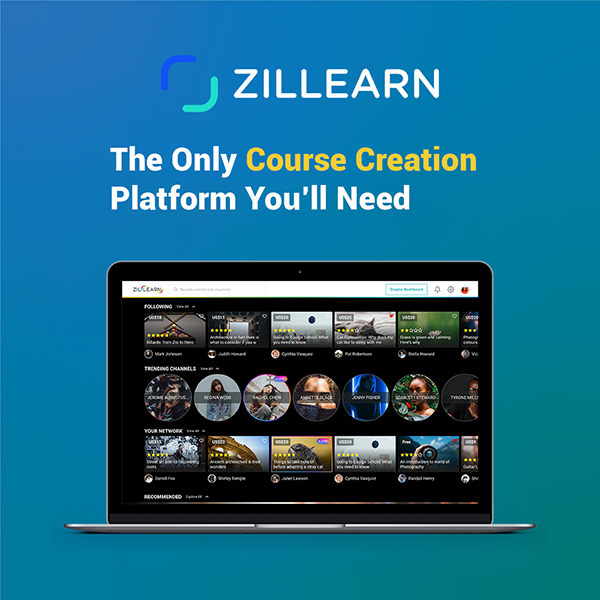How the Pandemic Sparked Innovations to Shake Up Traditional Models of Learning
Written by Tom Lin, CEO of AvePoint EduTech
Through the pandemic, education institutes around the world have had to quickly adapt and accelerate digital transformation as they shifted to hybrid learning. In Singapore, blended learning has been pushed to the forefront of the country’s education agenda — and is replacing traditional teaching approaches and models.
Many schools found themselves adopting piece-meal digital systems to cater for online learning as a quick turnaround but failed to enable a seamless experience in hybrid learning in the long-run for all education stakeholders.
Students, and by extension their families, have adapted to remote learning by using a plethora of devices and collaboration platforms — from learning management systems to virtual conference tools, and at times, using more than one platform at once in a non-integrated manner.
While comprehensive lesson plans, a well-equipped school infrastructure, and highly skilled teachers are still important ingredients in building an academically engaging environment, technology has moved to the forefront for better academic engagement and learning continuity.
Digitalizing Classroom Interactivity
Globally, we have seen the rise of digital technologies and Institutes of Higher Learning (IHLs) around the world have acknowledged that they will be instrumental in paving the way for continuous education and lifelong learning.
A variety of digital learning platforms have been created and adopted globally, but in reality, the overall quality is still lacking.
Instead, hybrid learning enables students and teachers to collaborate in real-time, virtual environments.
For example, the use of an in-classroom video wall and audio-visual streaming tools enables teachers to communicate with students individually or as a group, and allow for effective participation in a true, two-way dialog during sessions.
In fact, to take things up a notch, a single platform that possesses all of the above capabilities — communicative, functional, and engaging — redefines a truly collaborative learning experience.
With the power of automation and data analytics, educators can now bridge the gaps between themselves and their students, even when they are physically apart.
Digital platforms are able to profile students’ learning behavior through their topical progress, question scores to determine which aspects need more targeted attention. Educators can utilize platform tools to adjust how they would organize lesson content and pace, leverage interactive elements to enhance students’ interest in topics, and holistically boost the pedagogy of their curriculum.
Never before have educators gotten this level of control in tailoring their teaching methods. Moreover, with the support of the data-driven insights, teachers can now optimize learning for any student, and adjust their approach to help each student better learn various topics in a highly personalized way.
The benefits of having digital tools incorporated into the learning experience isn’t just great for educators to enhance pedagogy.
Better yet, when learning platforms are built on top of digital collaboration tools that students will use later in their careers, that sets them up for success. In the long run, these solutions will enable better matching between lesson plans and the needs of students.
Exams in the New Age
While digitalization in education has brought with it many advantages, there were some initial concerns, especially at the start of the pandemic. As schools closed and educators had to move towards remote learning, there were worries surrounding the continuation of exams and how it would manage the potential of cheating.
To nip this issue in the bud, schools needed to implement digital assessment platforms to manage hybrid exams online.
Despite not being trained in IT, educators were expected to be trusted, first contact point for students when they encounter difficulties. This is where technology can be used as the tool to bridge gaps and empower educators.
With education technology, secure and intuitive digital assessment experiences can be created for students and educators alike. Educators now have the flexibility at their fingertips to design exams perfectly aligned to curriculum goals and outcomes.
Proctoring and grading of assessments have never been easier and more consistent, with AI enabling reliable candidate verification for remotely held exams, and platforms that support external collaborators such as exam paper authors, markers, and invigilators.
Empowering Lifelong Learning & Continuous Education
Beyond elementary and higher education, there is a need for digital learning in the workplace.
In Singapore, where continuous learning and upskilling is a nation-wide initiative to build workforce resilience in new thriving economic industries, IHLs, and Training Organizations now have a compelling need to digitalize the way they list and deliver courses for professional learning.
In Singapore, some institutions have opted to take on a bold transformative approach to build their own training platforms to integrate their ecosystem of content and training partners, CRM systems, learning tools, and external grant, and payment systems to create a seamless digital experience for learners, administrators, trainers, and partners.
There are also organizations, whose core operations cover content distribution and professional certification, may choose to subscribe to a ready SaaS platform that is tailored to digitize content delivery and exams, which helps to bring their core operations online in just months.
In either case, students benefit from a modern learning experience, and staff administrators enjoy a simplified and automated process of managing clients, content, external partners, and reports etcetera.
Learning Management Platforms that best suit this segment will need to address the core needs of training providers from an enterprise productivity angle as much as a learner-centric solution design.
Design factors centred on adult learning, bite-sized information on-the-go, modular content that aligns to a skills and competencies framework, robust content recommendation engines, and ease of integration to third party tools should all be considered when choosing the right platform to augment training digitalization.
Not only do digital learning platforms provide the flexibility that learners, educators, and administrators all crave, but it also allows real-time engagement between peers, more efficient use of resources, easier administration of education processes, and ultimately, a better learning environment for all.




